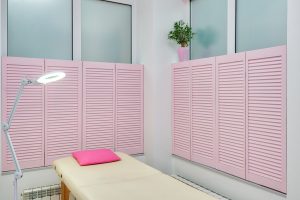Fort Walton Beach, FL
428 Mary Esther Cut Off NW Unit A,
Fort Walton Beach, FL
32548, United States
(850) 374-3595

subscribe
Fort Walton Beach, FL
428 Mary Esther Cut Off NW Unit A,
Fort Walton Beach, FL
32548, United States
(850) 374-3595
Gulf Breeze, FL
To book and check for availability
When choosing a tanning bed, one of the benefits of a tanning salon is that they offer a wide variety of colors and beds. These options make it easy to match your skin tone with the perfect look. Tanning products from tanning salons can range from a light golden glow to a deep bronzed color. Professionals at a tanning salon can recommend the perfect tanning solution for your needs. The following are just a few of the benefits of a tanning salon. A great post
Using UV rays from tanning beds increases the risk of skin cancer and overexposure to the sun accelerates the aging process. Besides burning the skin, UV rays can also cause mutations in genes and increase the risk of developing certain types of skin cancer. While tanning in a tanning salon is fast and easy, it can leave patrons feeling irritated or depressed. In addition, UV rays can aggravate stretch marks, so self-tanner is recommended for such cases.
One of the biggest disadvantages of tanning salons is their seasonality. Some years you may not earn much money from it, while others might do great. If you plan to stay open year-round, you should develop a complementary business to supplement your tanning business. It is important to find a location where there is plenty of parking. The cost of leasing a commercial space varies depending on the size of the building, location and any necessary modifications. Moreover, renovating an existing commercial space may be expensive, especially if the HVAC system and electrical wiring need to be changed to accommodate tanning beds.
You might be against the idea of visiting an indoor tanning salon, but you should know that it actually has a lot of benefits. One of the greatest benefits of indoor tanning is that you can get a tan in fifteen minutes, which is the same as spending half an hour in the sun. It also helps produce vitamin D. In fact, over half of college students say that they have tanned their bodies indoors.
The health risks associated with indoor tanning are well-known. Over 28 million Americans visit indoor tanning salons every year. They’re mostly white, young women. Younger women in the Midwest and south are more likely to visit tanning salons. Some estimates indicate that 44 percent of these women visit tanning salons each year. However, there are also numerous studies linking indoor tanning to cancer, and some even state that it may increase your risk of melanoma. The World Health Organization’s International Agency for Cancer Research has declared UV light from tanning beds to be a carcinogen. Numerous other studies have confirmed this theory. Click for more info
The indoor tanning industry has a dangerous myth that it has made safer than sun exposure. Tanning beds emit UVA rays, which penetrate the skin much deeper than UVB rays. They are also a potential cause of skin damage and skin cancer. In order to prevent skin cancer, you should avoid indoor tanning, but there are still precautions you should take. Here are some guidelines. Read on to learn more about the dangers of indoor tanning.
Research has shown that exposure to UVR from indoor tanning is associated with an increased risk of skin cancer. Research has indicated that a single trip in a tanning bed produces the same UVR intensity as a day outside with an extremely high UV index. Unlike outdoor tanning, indoor tanning may actually increase your risk of melanoma by 20%. The American Academy of Dermatology has classified tanning beds as carcinogenic to humans.
In the past three years, more than 349 women have developed melanoma, the deadliest type of skin cancer. Another 5,500 have been diagnosed with basal cell carcinoma. While all types of tanning devices pose risks, tanning beds pose the greatest risk for cancer. Early indoor tanning is linked with a much higher risk than later on in life. The study found that for every year under twenty that participants tanned indoors, their risk increased by 10 percent.
There’s no evidence to suggest that exposure to UV light from tanning salons is directly related to the development of melanoma. However, some studies have cited the possibility of a relationship between the sun and skin cancer. Studies have shown that sunlight exposure can cause p53 mutations in skin cancer cells and promote tumor growth. The study was published in the journal J Investig Dermatol Symp Proc.

subscribe
Save 10% on your first visit.
Enter email for code.
